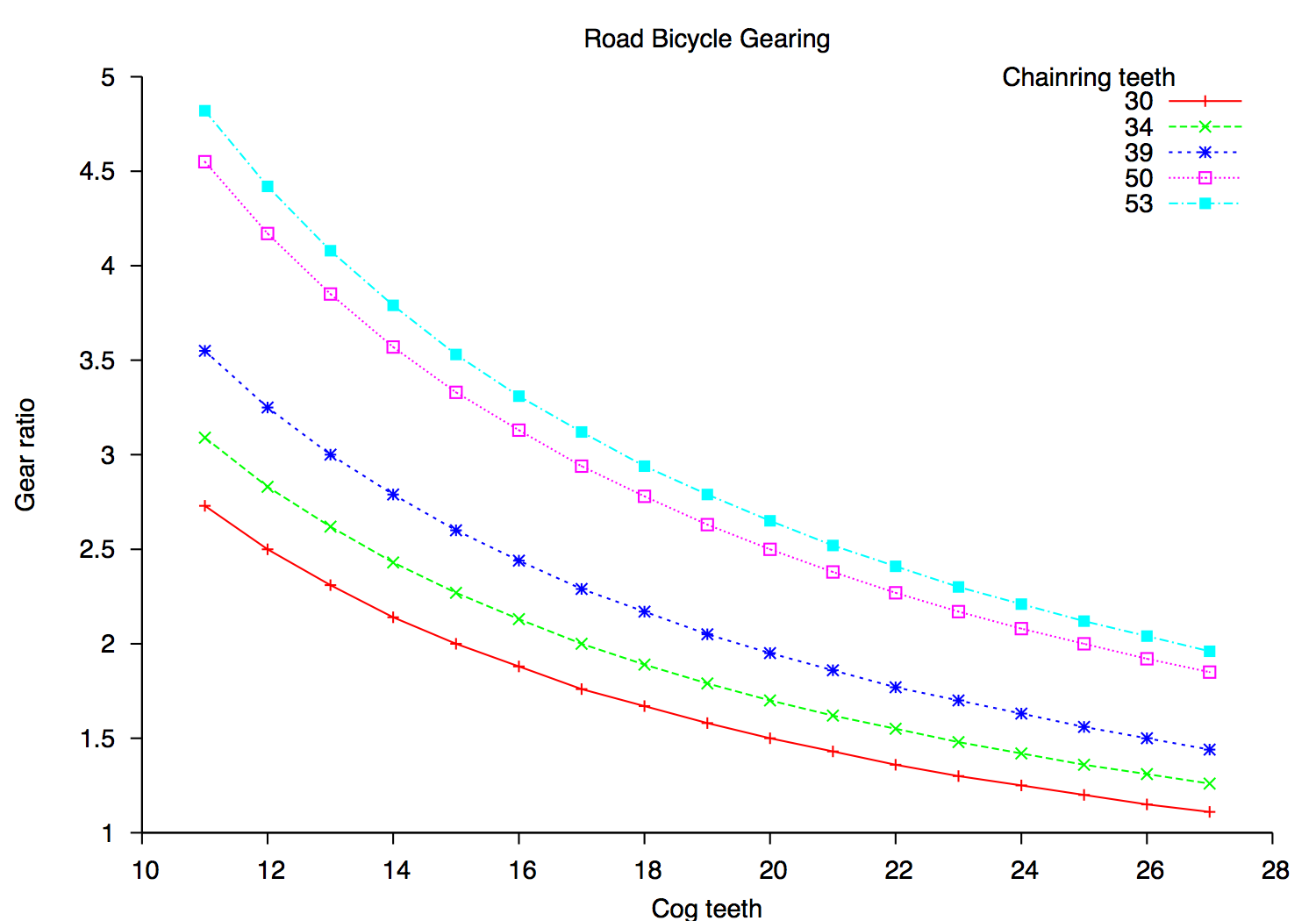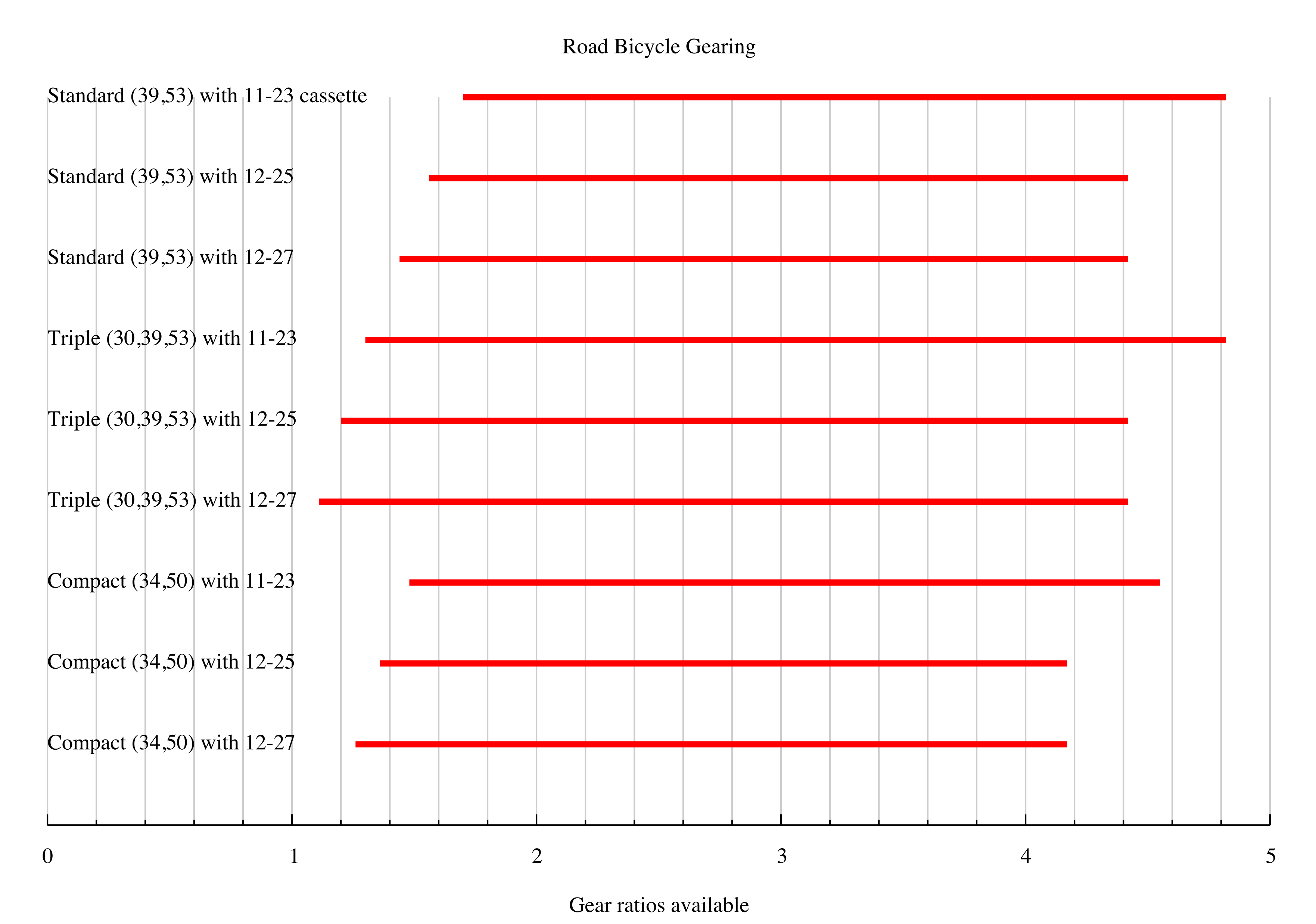Road-Bike Gearing
With the proliferation of gearing ratios available on bikes now, there are often questions about what's the best gearing. Should you go with standard, triple, or the new "Compact" drive? Should you use a 12-25, 12-27, or 11-23 cassette? The answer to these questions will depend on the individual rider, of course, but hopefully this page will provide some quantitative data that may help with the decision.
Gear ratio is the ratio of the chainring teeth to the cog teeth. For example, if you are using a 39-tooth chainring, and the chain is on the 13-tooth cog at the wheel, then the gear ratio is 3.0. This number is also the number of turns that the wheel makes per turn of the cranks, so in this case, the wheel would turn three times for each complete turn of the pedals.

As you can see from this graph, the highest gear ratio available to a standard or triple (53-tooth chainring) with a 12-25 cassette is about 4.4. The compact drive (50-tooth chainring) has a lower top gear ratio of about 4.2 with the 12-25 cassette, but a slightly higher ratio if you use a 11-23 cassette. Interestingly, combining the compact drive chainrings (34,50) with an 11-23 cassette gives a wider range of gearing than the standard (39,53) on the most common (12-25) cassette. This is worth considering if you'd like a wider gear range but would prefer not to go to a triple.
Here's a look at just the gearing ranges available for different setups.

It may be more helpful to think of all this in terms of speed, since that's what we're really interested in as cyclists... Here is the same information, but instead of showing the gear ratio, this shows how fast you would be going in each gear if you were spinning the cranks at 90 rpm. I've assumed that the rear tire circumference is 210 cm, which is a reasonable average for 700c tires.

Hopefully this will be useful. I've included in the graphs all of the road-bike gearing options I know: if you know others that should be included please let me know.

